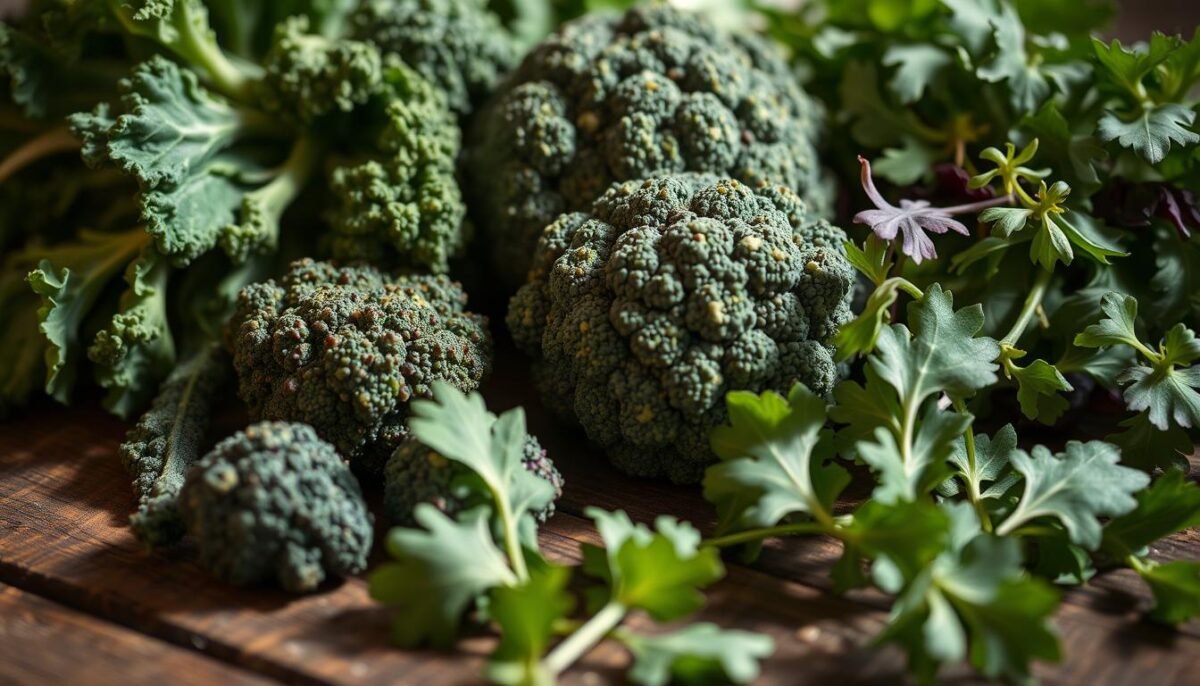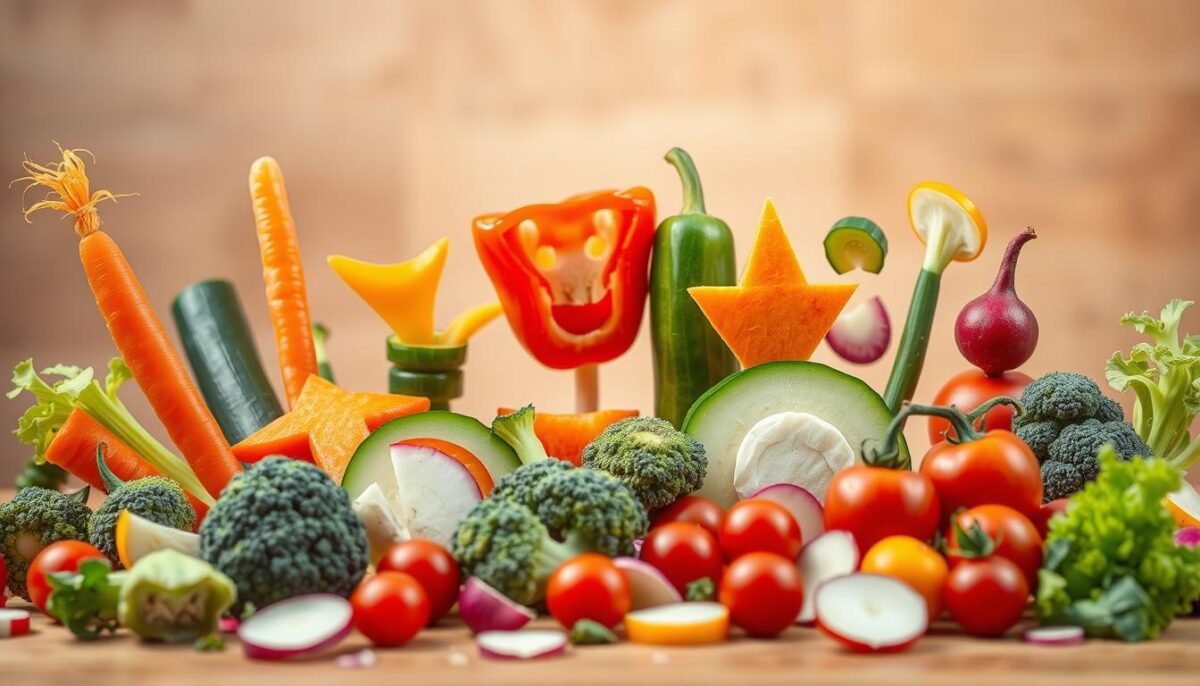
How to Turn Broccoli Into a Kid-Friendly Snack They’ll Actually Eat
April 10, 2025
6 Fun Veggie Recipes That Feel Like Playtime, Not Mealtime
April 11, 2025I’ll never forget the first time my nephew scrunched his nose at a plate of steamed broccoli. His tiny fists pushed the bowl away, and he declared, “It’s yucky!” Sound familiar? If you’ve ever felt defeated after a dinner-table showdown, you’re not alone. Many parents face the same daily battle—and it’s not just picky eating. There’s science behind those stubborn refusals.
Research shows that children are hardwired to avoid bitter flavors. It’s an evolutionary trait: bitterness often signaled toxicity to our ancestors. While veggies like spinach or Brussels sprouts pack nutrients, their natural taste can trigger resistance. Add texture sensitivities or past negative experiences, and it’s easy to see why greens end up on the floor.
As a parent, I’ve learned that forcing bites rarely works. Instead, small shifts in approach can make a big difference. Studies from the NIH suggest that repeated exposure—without pressure—helps kids grow accustomed to new foods. Role modeling matters, too. When children see adults enjoying veggies, they’re more likely to try them.
This article isn’t about tricking your child into eating carrots. It’s about creating positive food experiences that stick. From clever meal prep ideas to making veggies fun, I’ll share strategies that transformed my family’s dinner routine—and can do the same for yours.
Key Takeaways
- Children’s dislike of veggies is often tied to natural taste sensitivities.
- Repeated exposure and patience are key to expanding food preferences.
- Positive role modeling by adults encourages kids to try new foods.
- Creative presentation can make vegetables more appealing to young eaters.
- Small, consistent changes yield better results than mealtime pressure.
Why kids hate vegetables: Unpacking the Reasons
My friend’s 4-year-old once threw a carrot slice like a frisbee during dinner. Sound dramatic? Many parents recognize this scene. Young palates face two big hurdles: biology and instinct.
When Flavor Feels Like a Foe
Ever notice how broccoli makes a child’s face scrunch? Cruciferous veggies contain compounds that taste bitter to sensitive tongues. Studies show children have twice as many taste buds as adults, making strong flavors overwhelming. Texture adds another layer—slimy okra or fibrous celery can feel alien compared to familiar foods.
Nature’s Safety Mechanism
Food neophobia—the fear of new foods—peaks between ages 2-6. This instinct protected early humans from poisonous plants. Today, it means a preschooler might reject spinach simply because it’s unfamiliar. Research from Penn State reveals:
- It takes 8-15 exposures for most children to accept a new food
- Forced eating increases resistance by 40%
- Positive role modeling doubles tasting attempts
I learned this the hard way when my niece refused roasted zucchini for months. But after letting her explore it through play (yes, that meant wearing a slice as a mustache), she eventually took a bite. Small steps matter more than clean plates.
Exploring Biology and Taste: The Science Behind Vegetable Aversion
Watching a preschooler spit out Brussels sprouts isn’t defiance—it’s thousands of years of evolution at work. Our ancestors survived by avoiding bitter plants that might be poisonous. Modern greens like kale contain glucosinolates, compounds that trigger that same “danger!” signal in developing taste buds.

Evolutionary Perspectives on Bitterness
Children’s taste receptors detect bitterness 60% more intensely than adults’, according to NIH studies. This hypersensitivity served early humans well but complicates dinner time today. Cruciferous vegetables pack nutrients behind their sharp flavors—a biological mismatch that explains why a single bite can make little ones shudder.
How Children Perceive Flavor Differently
My neighbor’s son once described cauliflower as “spiky and angry.” He wasn’t being poetic. Kids have up to 30% more taste buds concentrated in smaller mouths, amplifying every flavor note. Textures matter too: research shows mushy or fibrous foods get rejected twice as often as crunchy alternatives.
Here’s the hopeful twist: taste preferences aren’t fixed. A University of Michigan study found that repeated exposure to disliked foods changes how the brain processes flavor. When my niece started planting “broccoli trees” in her mashed potatoes, she went from protesting to nibbling within weeks. Biology sets the stage, but patience writes the script.
Five Tricks That Change the Mealtime Game
The day my daughter declared celery sticks “dinosaur bones” was the day veggies stopped being a battle. Through trial and error—and help from nutrition experts—I discovered strategies that work better than begging or bargaining. These five approaches build curiosity, not conflict.
Creative Presentation and Repeated Exposure
Turn zucchini into spirals with a $5 kitchen tool. Arrange cherry tomatoes like ladybugs on a plate. Studies show playful presentation increases tasting attempts by 73%. I keep a “snack lab” drawer with cookie cutters and food markers—letting my child transform cucumbers into stars or bell peppers into boats.
Consistency matters more than quantity. The VegKIT program found offering one pea-sized portion daily reduces resistance within weeks. I started with “tiny taste” challenges: “Let’s lick this roasted carrot together!” Over time, those licks became bites.
Parent Modeling and Positive Reinforcement
Children mirror what they see. When I crunch raw snap peas during movie night, my child reaches for the bowl. Research confirms kids are three times more likely to try foods adults enjoy without pressure. Celebrate small wins: “You touched the broccoli—awesome!” Sticker charts work wonders for my niece—five tries earns a trip to the park.
Pack veggie sticks in lunchboxes with hummus “paint.” Let them dip asparagus in yogurt sauce. These tactile experiences make unfamiliar textures less intimidating. Remember: it’s about progress, not perfection. Every green speck swallowed is a step toward a healthier diet.
Designing Fun and Positive Vegetable Experiences
When my cousin’s 5-year-old asked to “paint” cucumbers with hummus, I knew we’d cracked the code. Transforming meal prep into playtime creates natural curiosity—and research confirms participation boosts acceptance rates by 58%. The key? Let little hands get messy.
Interactive Cooking and Kid-Friendly Food Prep
I let my nephew stack bell pepper “towers” while I chopped ingredients. Assigning age-appropriate tasks builds investment. A VegKIT study found children who help prepare meals try 3x more vegetables than those who don’t. Simple ideas work best:
- Washing lettuce becomes a “car wash” game
- Snapping green beans doubles as a counting lesson
- Arranging veggie faces on pizza crusts sparks creativity

Making Vegetables Appealing with Fun Shapes and Dips
Cookie cutters turn zucchini slices into stars. Carrot coins become “pirate treasure” when paired with yogurt ranch. Dips increase tasting attempts by 41%, according to USDA data. Start with familiar flavors:
| Vegetable | Fun Shape | Dip Pairing |
|---|---|---|
| Cucumber | Heart slices | Tzatziki |
| Sweet potato | Waffle fries | Maple cinnamon |
| Bell pepper | Strawberry cuts | Guacamole |
Keep portions tiny—a single broccoli floret counts as a win. My rule? “Two-bite adventures” with zero pressure. Over time, those cautious nibbles turn into genuine enjoyment.
Conclusion
Seeing my little one finally munch on kale chips without a fuss taught me this truth: food preferences grow with time and creativity. Biology explains initial resistance—bitter tastes and unfamiliar textures trigger natural caution. But as VegKIT research shows, playful engagement and patience rewrite the script.
What works? Letting children explore veggies through hands-on prep. Celebrate when they touch a new food. Swap “eat your greens” demands for “let’s build a rainbow plate” invitations. Studies prove eight to fifteen exposures often lead to acceptance—no forced bites required.
Your dinner table isn’t a battleground. Keep meals light. Use cookie-cut shapes or dip stations to spark curiosity. Remember: every tiny interaction builds healthier habits. One mom shared how her son started craving roasted carrots after using them as “log bridges” for his toy trucks.
Thank you for exploring these strategies with me. Your journey matters—share your wins, big or small. When we focus on joy over pressure, we plant seeds for lifelong healthy eating. And that’s a victory worth savoring.
FAQ
Is picky eating just a phase, or should I be concerned?
Many children go through phases of avoiding new foods, including veggies. It’s often tied to natural instincts like food neophobia. If they’re growing well and trying other foods, stay patient. If extreme, talk to a pediatrician.
How can I make bitter greens like kale less overwhelming?
Roasting or blending bitter veggies into smoothies balances their flavor. Pairing them with dips like hummus or yogurt ranch also helps. Over time, repeated exposure can soften their resistance.
Do taste buds really change as kids grow?
Absolutely! Sensitivity to bitter tastes often decreases with age. What they reject at 4 might become a favorite by 8. Keep offering veggies in different forms—raw, cooked, or mixed into dishes.
Can involving my child in meal prep actually help?
Yes! Letting them wash, tear lettuce, or arrange colorful veggies on a plate builds curiosity. When they feel ownership, they’re more likely to taste their creations.
What if my child refuses to try anything green?
Start with sweeter options like roasted carrots, corn, or bell peppers. Gradually introduce milder greens like spinach in pasta sauces or zucchini muffins. Celebrate small wins without pressure.
How do I handle a total veggie boycott at dinner?
Stay calm. Offer veggies as a snack later or blend them into familiar foods like soups or mashed potatoes. Consistency matters—keep them on the plate, even if untouched, to normalize their presence.



